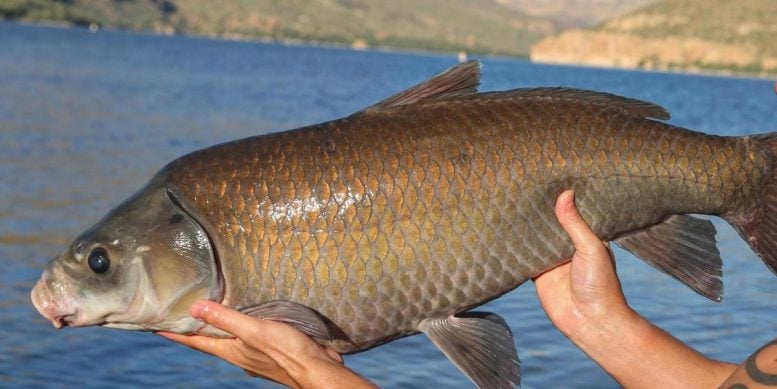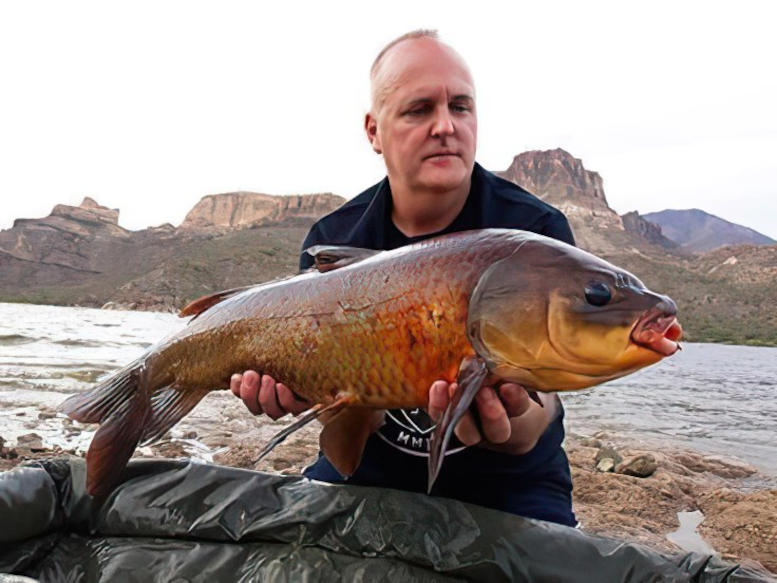
A century-old buffalofish from Apache Lake, Arizona. Credit: University of Minnesota Duluth
A recent study found some of the oldest animals in the world living in a place you wouldn’t expect: fishes in the Arizona desert. Scientists have identified the second-known genus of animals that boasts three or more species with lifespans exceeding a century. This remarkable find has the potential to expand research in various fields, including those focused on gerontology and vertebrate senescence, offering new insights into longevity.
Importance and Misidentification Issues
The study centers around a series of fish species within the Ictiobus genus, known as buffalofishes. Minnesota has native populations of each of the three species studied: bigmouth buffalo, smallmouth buffalo and black buffalo. The importance of this research is underscored by the fact that these fishes are often misidentified and lumped in with invasive species, like carp, and the fishing regulations in many places, including Minnesota, do not properly protect these species, and what could become a wealth of information about longevity and aging.
Research Collaboration and Methods
This new research from the University of Minnesota Duluth (UMD), recently published in Scientific Reports, was a collaboration between Alec Lackmann, PhD, an ichthyologist and assistant professor in the Department of Mathematics and Statistics of the Swenson College of Science and Engineering at UMD; other scientists including from North Dakota State University; and a group of conservation anglers who fish the Apache Lake reservoir in Arizona.
“There is likely a treasure trove of aging, longevity, and negligible senescence information within the genus Ictiobus,” said Lackmann. “This study brings light to this potential and opens the door to a future in which a more complete understanding of the process of vertebrate aging can be realized, including for humans. The research begs the question: what is the buffalofishes fountain of youth?” University of Minnesota

Angler Stuart Black displays a spectacular centenarian bigmouth buffalo from Apache Lake, Arizona. Credit: University of Minnesota
Lackmann has studied buffalofishes before, and his research from 2019 went so far as to extend the previously thought maximum age of bigmouth buffalo from around 25 years of age, to more than 100 years of age by applying and validating a far more refined aging technique than had been used previously. Instead of examining the fish’s scale, “you extract what are called the otoliths, or earstones, from inside the cranium of the fish, and then thin section the stones to determine their age,” said Lackmann.
Approximately 97 percent of fish species have otoliths. They’re tiny stone-like structures that grow throughout the fish’s lifetime, forming a new layer each year. When processed properly, scientists like Lackmann can examine the otolith with a compound microscope and count the layers, like the rings on a tree, and learn the age of the fish.
Study Findings and Conservation Efforts
Results of the study include:
- Unparalleled longevity for freshwater fishes. Namely, three species with lifespans of more than a century, with greater than 90 percent of the buffalofishes in Apache Lake more than 85 years old.
- The discovery that some of the original buffalofishes from the Arizona stocking in 1918 are likely still alive.
- A fishery of catch-and-release buffalofish angling that has not only increased our knowledge of fisheries, but also our understanding of how buffalofishes can be identified and recaptured across years, including uniquely-marked centenarians.
- A robust citizens and scientists collaborative effort that has resulted in thorough and consistent scientific outreach and learning.
Buffalofishes are native to central North America, including Minnesota, but those in this recent study were found in Apache Lake, a reservoir in the desert southwest. Originally reared in hatcheries and rearing ponds along the Mississippi River in the Midwest, the government stocked buffalofishes into Roosevelt Lake (upstream of Apache Lake), Arizona in 1918. While Roosevelt Lake was fished commercially, Apache Lake’s fish populations remained largely untouched until anglers recently learned how to consistently catch buffalofishes there on rod-and-line.
When these catch-and-release conservation anglers noticed unique orange and black spots on many of the fish they were catching, they wanted to learn more about the markings, and found Lackmann’s previous research. An Arizona angler, Stuart Black, reached out and invited Lackmann to a fishing expedition at Apache Lake, where the fish collected would be donated to science.
By studying the fishes collected at the angling event and analyzing their otoliths for age, Lackmann found that some of the buffalofishes from the 1918 Arizona stocking are likely still alive today, and that most of the buffalofishes in Apache Lake hatched during the early 1920s. More importantly, they discovered that the three different buffalofish species found in the lake had ages more than 100 years. To their knowledge, such longevity across multiple freshwater fish species is found nowhere else in the world.
For Lackmann, there are exciting possibilities for the future of studying this unique group of fish, with far-reaching implications.
“These long-lived species of fishes and individuals could be monitored so that we can further study and understand their DNA, their physiology, their ability to fight infection and disease, and to compare these systems across the continuum of age,” said Lackmann. “The genus Ictiobus has the potential to prove of high value to the field of gerontology, and Apache Lake could become an epicenter for a variety of scientific research in the future.”
Reference: “Centenarian lifespans of three freshwater fish species in Arizona reveal the exceptional longevity of the buffalofishes (Ictiobus)” by Alec R. Lackmann, Stuart A. Black, Ewelina S. Bielak-Lackmann and Jeffrey A. Lackmann, 20 October 2023, Scientific Reports.
DOI: 10.1038/s41598-023-44328-8









I’m impressed by the scientific skill and imagination of Professor Lackmann and his associates. My only quibble is that I wish he’d look up what “begging the question” means.
“Namely, three species with lifespans of more than a century, with greater than 90 percent of the buffalofishes in Apache Lake more than 85 years old.”
Why the lopsided age distribution? Are they not reproducing? This suggests that when the original fish die out, there may be a crash in the population.